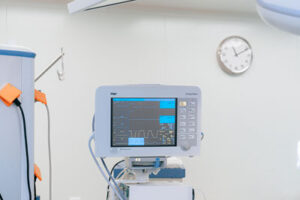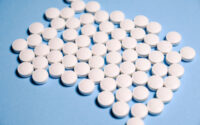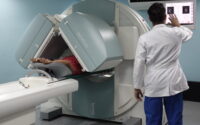Dialysis Technician Questions and Answers
Dialysis Technician Questions and Answers Papers is available here. Welcome to our MCQs on Electro dialysis Exam papers page. Here you can find the direct link for various Dialysis Questions and Answers Papers.
Find the latest Dialysis MCQs Questions and Answers details on our page. In this page, we have given the direct links for the Dialysis Interview Questions and Answers PDF Papers.
Also, Job Seekers who are looking for Dialysis Technician Questions and Answers Papers for respective Posts like can find here.
The Applicants can also find the Dialysis Practice Question And Answer, Syllabus and Test Pattern details in our Dialysis Interview Questions and Answers PDF page. Where, the candidate can download the Dialysis Interview Questions and Answers PDF for free.
However, let’s check the Dialysis Practice Question and Answer Papers details below. The Dialysis Technician Question Paper is updated on this page. The aspirants who are browsing the Internet for the Dialysis Questions and Answers Model Papers of can refer this page.
Model Questions and Answers for Dialysis Technician
(1) Which of following is not part of Nephron:
A. Glomerulus
B. Proximal convoluted tubule
C. Middle convoluted tubule
D. Distal convoluted tubule
(2) Which hormone is secreted by kidney:
A. Renin
B. Aldosterone
C. Thyroxine
D. Growth Hormone
(3) What is normal GFR in adult humans:
A. 90 ml/minute
B. 120 ml/minute
C. 100 ml/minute
D. 80 ml/minute
(4) Most common cause of chronic kidney disease:
A. Diabetes mellitus
B. Hypertension
C. ADPKD
D. Glomerulinephropathy
(5) Chronic kidney is defined as derangement of renal function for more than
A. 1 month
B. 2 months
C. 3 months
D. 4 months
(6) Which is not a part of Nephrotic syndrome:
A. Proteinurla .5 gm/24 hours
B. Hypoalbuminemia
C. Oedema
D. Hyperkalaemia
(7) Gold standard method of Glomerular Filtration Rate (GFR) estimation is
A. Creatinine clearance
B. lnulin clearance
C. PAH clearance
D. Urea clearance
(8) Who is called father of dialysis:
A. Willem John Koiff
B. Richard Bright
C. Peiar Medawar
D. Tarasaki
(9) Basic principal of haemodialysis is:
A. Difiusion
B. Convection
C. Conduction
D. none of these
(10) What is recommended frequency of dialysis:
A. Once a week
B. Twice a week
C. Thrice a week
D. Four times a week
(11) Which ol following is not a vascular access for haemodialysis:
A. AV Fistula
B. AV Graft
C. emporary catheter
D. Peritoneal membrane
(12) Which is not a material of dialyzer:
A. Polysulfonate
B. Polyester
C. Polycarbonate
D. Polyamide
(13) What is duration of conventional dialysis:
A. 2 hours
B. 3 hours
C. 4 hours
D. 5 hours
(14) What are various safety monitors of haemodlalysis machine
A. Pressure monitor
B. Air detector
C. Blood leak monitor
D. All of these
(15) Which anticoagulant is used during dialysis?
A. Heparin
B. Citrate
C. LMWH
D. All of these
(16) What is normal component of dialysis machine?
A. Blood pump
B. Pressure monitor
C. Dialyzer
D. D. All of these
(17) Commonly used dialysis solutionn
A. Acetate
B. Bicarbonate
C. Both
D. None of these
(18) Which of the following is modality of dialysis
A. Haemodialysis
B. Hemodiafiltration
C. Hemofiltration
D. All of these
(19) Which is preferred anticoagulant during increased bleeding risk patient?
A. Regional citrate anticoagulant
B. Heparin
C. Low molecular weight Heparin
D. Danaparoid
(20) Which of the following is composition of dialyzer membrane?
A. Cellulose
B. Substituted cellulose
C. Synthetic polymer
D. All of these
(21) Normal blood pump rate during dialysis
A. 200-300 ml/minute
B. 50-100 ml/minute
C. 400-500 ml/minute
D. 600-700 ml/minute
(22) What is KDOQI recommendations for weekly KW for haemodialysis adequacy?
A. 2.5
B. 2.9
C. 1.5
D. 2.1
(23) Which is not a component of normal dtalysate solution?
A. Sodium
B. Calcium
C. Magnesium
D. Cadmium
(24) Which of the following is/are complications of haemodlalys is?
A. Hypotension
B. Hypertension
C. Muscle cramps
D. All of these
(25) Which is immediate treatment of intradialytic hypotension?
A. Stopping ultraiiltration
B. Infusion of saline bolus
C. Elevating patient‘s legs
D. All of these
(26) Which is complication of AV Fistula:
A. Aneurysm
B. Bleeding
C. Thrombosis
D. All of these
(27) Which is not a neurological complication of haemodialys is?
A. Restless leg syndrome
B. Dialysis disequilibrium
C. Muscle cramps
D. Dialysis associated steal syndrome
(28) Type A reaction usually occurs after of dialysis initiation:
A. 5-20 minutes
B. 1Hour
C. 2 Hours
D. 4 Hours
(29) First use_ reaction of dialysis occurs due to:
A. Ethylene Oxide (ETO)
B. Formaldehyde
C. Glutaraldehyde
D. Renalin
(30) What is AAMI standard tor dialysis water treatment for microorganisms (CFU/ml) and Endotoxins (EU/ml):
A. < 2O0CFU & 2 EU/ml
B. < 300CFU & 3 EU/ml
C. < 400CFU & 4 EU/ml
D. < 500CFU & 5 EU/ml
(31) Common site ol temporary dialysis catheter insertion:
A. Internal Jugular
B. Femoral
C. Subclavian
D. All of these
(32) What is maximum urea reduction ratio (UFlFl) required during haemodialysis:
A. 65-70%
B. 35-40%
C. 80-85%
D. 50-55%
(33) Which of the following is middle molecular weight uremic solute:
A. Hippuric acid
B. Creatinine
C. Microglobulin
D. Guanidine
(34) Treatment for muscle cramp during haemodialysis:
A. Hypertonic Saline
B. 25% Mannitol
C. 50% Dextrose
D. All of these
(35) Which is not an indication for starting dialysis:
A. Resistant Hyperkalaemia
B. Resistant metabolic acidosis
C. Resistant volume overload
D. Resistant Hypophosphatemia
(36) Which of the following is continuous dialysis modality:
A. CVVH
B. CVVHD
C. CVVHDF
D. All of these
(37) What is classical model of peritoneal dialysis:
A. 2 Pore model
B. 3 Pore model
C. 4 Pore model
D. 5 Pore model
(38) What is various glucose concentration in PD solution:
A. 1.5%
B. 2.5%
C. 4.5%
D. All of these
(39) Various techniques of peritoneal dialysis catheter insertion is/are:
A. Seldinger technique
B. Laparoscopic
C. Peritoneoscopic
D. All of these
(40) Recommended weekly Urea KW for CAPD is:
A. 1.5
B. 1.6
C. 1.7
D. 1.8
(41) Recommended weekly creatlnine clearance for CAPD is:
A. > 50L/1.73 m2
B. > 60L/1.73 m2
C. >70L/1.73 m2
D. > 80L/1.73 m2
(42) Which of the following is not an early complication of PD catheter insertion
A. Inflow pain
B. Outflow pain
C. Fluid leak
D. Encapsulating peritoneal sclerosis
(43) Metabolic complications of peritoneal dialysis Include:
A. Protein loss
B. Glucose load
C. Dyslipidaemia
D. All of these
(44) Most common organism for exit site Infection for CAPD is:
A. Streptococcus
B. E. Coli
C. Staphylococcus aureus
D. Kiebsieila
(45) Diagnostic criteria for CAPD peritonitis in PD fluids:
A. >1OOWBC/mm2
B. >200WBC/mm2
C. >30OWBC/mm2
D. >400WBC/mm2
(46) Common organism involved in CAPD peritonitis in PD fluids
A. Gram positive
B. Gram negative
C. Both
D. None of these
(47) Transport along peritoneum during peritonitis:
A. Increases
B. Decreases
C. Unchanged
D. Increases then decreases
(48) Uitraflltration failure is defined as ultrafiltrate volume with 4.5% Glucose:
A. < 400 ml
B. < 300 ml
C. < 200 ml
D. < 100 ml
(49) Standard treatment duration for CAPD peritonitis is
A. 2-3 weeks
B. 4-5 weeks
C. 7 days
D. 10 days
(50) Which of the following solut|0n us used for CAPD
A. Glucose based
B. Lcodextrin
C. Amino acid based
D. all of these
Download More Questions on Paramedical Science
- ECG Technician
- Dental Technician
- Emergency & Trauma Technician
- Medical Counsellor
- Nutritionist
- Physiotherapist
- Medical Record Technician
- Operation Theatre Technician
- Clinical Psychologist
- Ophthalmic Technician
- Sanitary Inspector
- Radiographer Technician
- Ward Master
- Pharmacist
- Radiotherapy Technologist
- Clinical Instructor
- Medical Laboratory Technician
- X-Ray Technician



